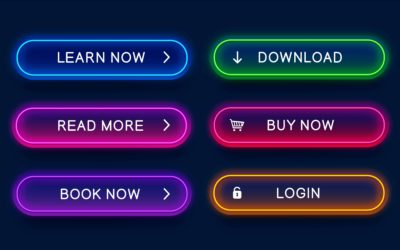 Getting the most out of your lead generation involves more than just getting as many people as possible to contact you or fill out your form.
Getting the most out of your lead generation involves more than just getting as many people as possible to contact you or fill out your form.
Generating the right leads that will improve your ROI and knowing the behavior of those leads before they convert is just as important. There are five metrics that you should be analyzing to determine which leads are your best leads and how to get more of them.
1. Cost-per-conversion
You may be receiving the most generated leads from a particular source (e.g. Google AdWords) but if those leads are too costly, it may not be worth it to keep generating leads from that source.
When determining the cost of generation a lead, keep in mind the labor involved in generating a lead, and not just direct advertising costs. Ask yourself these questions:
- How much are you spending on direct advertising (banners, ppc, etc.)?
- How many hours/dollars were required for the initial setup of the lead generation tactic?
- How many hours/dollars are required to maintain the lead generation effort or automate it?
- What other kinds of overhead are there (e.g. need more salesman to handle more leads, cost of servers, etc.)?
By keeping these questions in mind, you can find a balance between tactics that generate a lot of leads, but are quite expensive, and tactics that don’t generate many leads, but are cheap and automated.
The best tactics will be the ones that generate lots of leads inexpensively, and automating tactics (like direct emails) can improve the cost-per-conversion without sacrificing the number of leads.
2. Conversion Rates
Each visitor that arrives on your site should be treated as a potential lead, and if too many of your visitors are bouncing, there is room for optimization without the need to drive more traffic. It’s possible that many of those visitors could have converted, but there was an obstacle distracting them or frustrating them enough to prevent them from doing so.
There are many ways that you can optimize your lead generation tactics to improve conversion rates:
Optimize your landing pages: A good landing page is going to meet your visitor’s needs and provide an easy way for them to obtain it. Anything else is too much – to learn more about landing page design, click here.
Improve your ads: The two most important parts of an ad will be your unique selling point (USP) and your call-to-action. One will make you stand out from your competitors, and the other will show your visitor how to convert (and they need to be shown).
Work on your call-to-action (CTA): Your ads and your landing pages should have a strong, consistent CTA. You can’t assume that your visitor knows how to convert when they arrive, and a good CTA will also emphasize why it’s so worthwhile that the visitor does convert. Learn more about a good CTA here.
Nurture your leads: Some visitors may not convert on the first visit, but through lead nurturing tactics, you can get them to return and convert. These visitors are often very worthwhile in the long run because they are more likely to be loyal to your products.
According to Techpoint, you should be looking at benchmark data to determine how your conversion rate compares against your competitors. If a 5% conversion rate seems low, but is twice the average of your peers, then your focus should be turned towards gaining more traffic rather than improving conversion rates.
3. Qualified Leads
It’s possible to gain plenty of cheap leads through driving tons of traffic, but if those leads don’t follow through, they’re not worth it in the long run. Some of your lead generation tactics may be generating a lot of leads cheaply, but if none of those close, they’re not as worthwhile as the tactic that only generated a few leads, but multiples of those leads closed.
 Knowing which leads close is much easier to handle through a good lead management system that automates much of the information gathering. When a lead comes in, the salesman should be able to easily mark whether the lead is worthwhile, and do this in a way that allows you to pull easy reports on how many qualified leads there were, and how many had to be discarded.
Knowing which leads close is much easier to handle through a good lead management system that automates much of the information gathering. When a lead comes in, the salesman should be able to easily mark whether the lead is worthwhile, and do this in a way that allows you to pull easy reports on how many qualified leads there were, and how many had to be discarded.
However, don’t immediately discard a tactic if they aren’t generating the right types of leads. It’s possible that poor leads are being generated because the tactic isn’t be executed properly, not because it’s a bad tactic. Consider the other metrics (especially landing pages and conversion rates) to determine whether to discard or adjust a poor-performing lead generation tactic.
4. Landing Pages
Knowing how your best leads arrived at your site is key towards knowing where you want to drive your traffic. Most visitors will convert on the very first page they arrive on, and you need to make sure you know which pages those are so you can optimize them.
There are several stats to look at in terms of landing pages:
- What kind of page did they land on?
- Did they visit other pages, or convert on the first page?
- Did they arrive from a search engine, through a link, from an ad, or directly?
If a particular content page converts higher than others, then it’s likely that topic appeals the most to your target audience, and more content should be created similar to that topic to help generate more leads.
According to Heidi Cohen, 40% of their current customers were first introduced to their website through a piece of their content. Any page should be treated as a potential landing page when it comes to on-site optimization, and knowing which pages convert the most will help you know which pages to drive traffic to.
5. Conversion medium
Your target audience likely has a preference for how they want to contact you, and it’s necessary to know this so you can make that preference as easy to complete as possible.If you don’t already know which medium works the best for your visitors, you may be limiting the amount of leads you could receive. Choose your medium wisely – World of Warcraft users don’t want to call to sign up.
Choose your medium wisely – World of Warcraft users don’t want to call to sign up.
However, this doesn’t mean that you should place a bunch of different ways to convert on your page – more is not better in this case. Giving a visitor too many choices can lead to a bounce because you didn’t emphasize which one was best for them.
Instead, test different variation with different visitors. Try out a page with a form, one with just a phone number, or one with both on the page. A/B testing will give you backup as to what medium works best, and not just what you think your target audience wants best.




